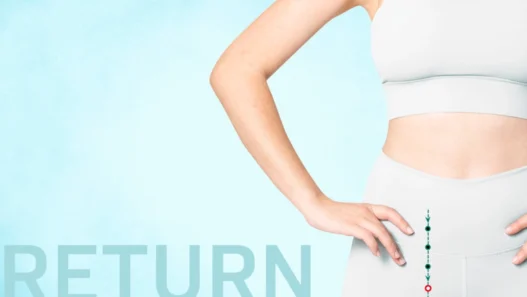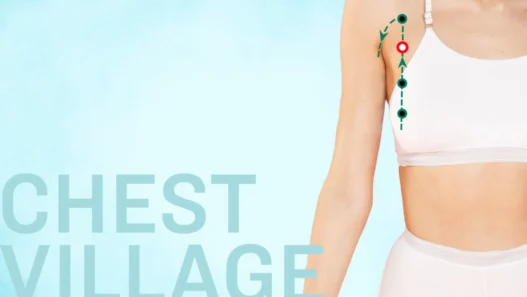Sometimes, being a woman feels like navigating a minefield of health risks—especially when it comes to breast health. Nearly half of breast cancers strike women with no risk factors beyond their age and gender. Beyond cancer—many women also face mastitis, inflammation, or other discomforts. In the face of these realities, preventive care becomes essential. The acupoint, Breast Window (Ying Chuang, ST16), offers a traditional perspective and a practical self-care method to support breast health and more.
Ancient Tools for Modern Concerns
First described in the “Zhen Jiu Jia Yi Jing” (“A-B Classic of Acupuncture and Moxibustion”), Ying Chuang earned its name for a reason. In traditional Chinese medicine (TCM), acupoints with the word “window” in their name often act as exits for pathogenic elements, such as wind or cold—energetic disruptions that can cause symptoms like cough, chest pain, or shortness of breath.
Ying Chuang sits on the Stomach meridian but interacts closely with the qi or vital energy of the lungs and the chest as a whole. Its main function is to regulate the energy in the chest area and support the body’s efforts to release pathogens and maintain the healthy flow of qi. Whether that qi is rising abnormally, stagnating, or simply not flowing as it should, Ying Chuang offers a pathway for relief.
Breast Health Support in Everyday Life
Although Ying Chuang is located on the stomach meridian, it is primarily used to address issues related to the chest. Regular stimulation of Ying Chuang can help relieve unexpected coughing, chest tightness, and respiratory problems with no apparent cause. These symptoms may arise from lung qi moving upwards, leading to discomfort.
More often, however, this acupoint is included in treatments designed to reduce pain, inflammation, and swelling in the breast tissue. Women who experience premenstrual tenderness, mastitis, or postnatal discomfort often seek relief using this point, as it helps regulate energy and promotes healing. Ying Chuang also serves a preventive role for various breast issues.
Modern Validation for an Old Remedy
Contemporary research is catching up to ancient knowledge. A review of 20 clinical trials found that TCM therapies—including acupuncture, cupping, moxibustion (a gentle heat therapy using dried mugwort), and scraping—can significantly improve lactation and alleviate breast engorgement. The acupoint Ying Chuang (ST16) emerged as one of the most effective in helping with milk flow and reducing breast fullness. These noninvasive treatments are especially effective when used within the first 24 hours postpartum, offering safe, effective relief and supporting a new mother’s ability to breastfeed.
How to Locate and Activate Ying Chuang
Ying Chuang is located on your chest, roughly four thumb-widths to the side of the midline, in the third intercostal space. If that sounds complicated, here’s a shortcut: Your nipple typically rests on the fourth rib. From there, trace your finger directly upward until you find the next rib above it. Press gently into the space between the second and third ribs—if it feels sore or tender, you’ve found the right spot.
Activating Ying Chuang
- Firm pressure: Press firmly for three to five seconds, then relax for three seconds. Repeat for one to three minutes on each side.
- Circular massage: Massage in small circles with your index finger or thumb for one to three minutes on each side.
- Herbal patch: Apply an herbal patch overnight for longer activation.
- Advanced methods: For deeper therapeutic work, try acupuncture, scraping, or moxibustion with a trained TCM professional.
Precautions
Avoid this area if there are injuries, infections, or open wounds. For herbal patches, choose ones with natural, skin-safe ingredients. If opting for acupuncture, always work with a qualified practitioner—deep needling in this region can be dangerous due to the proximity to the lungs.
Invest in Breast Health Before It’s Urgent
Think of Ying Chuang like changing the oil in your car. You don’t wait for the engine to break down—you do it regularly to keep everything running smoothly. Using this acupoint is a way to be proactive about your health, especially if you are a woman over 55, dealing with hormonal changes, stress, or recovering from childbirth. Share it with the women you care about. A little attention can go a long way in building resilience before problems arise.
TCM expert Shihhsiang Hung reviewed this article for accuracy and clarity.
Originally published in Epoch Times on 11 July 2025























